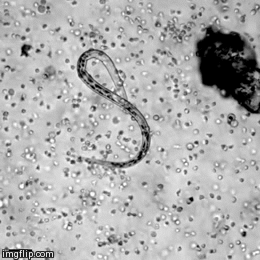Human:Nature
This is a broad category, inclusive of any global behaviors.
We are every bit as natural as Blue-Green algae or Pterodactyls but we can’t accept that. We hold unshakable convictions on what people are and how people should behave yet in the face of perpetual disappointment we are mystified. Perhaps humans are like every other animal: Living out an innate strategic script with limited degrees of freedom from it.
The “binding problem” is the question of how our various senses blend and synthesize into a smooth, unified flow. Nobody knows how right now. Francis Crick came up with the 40 hertz synchronization theory to explain the biological causes of consciousness but it seems very empty and thin. And unlikely.
All neurons process something. So at some level, each neuron is an experience and in a tiny way, an experiencer. We know different areas of the brain specialize in different areas and kinds of processing but these areas are not simple lumps of processing material, they are massed armies of neurons …gigantic rock concert crowds talking to each other and responding to the show on stage in front of them. When the band yells out “Hello Cleveland!” and the crowd roars back…it becomes like a single entity, made of millions.
The mistake we make in imagining neurons is seeing them as essentially passive wiring that signals are flowing along like an old telegraph or telephone system with a caller at one end and a receiver at the other. In reality, that level of transmission doesn’t require anything like the amount of neuronal population and activity we have going on. The information coming into the system has to be batch processed, and blended with information from other “departments” to derive the basic picture/sound/smell combination and this has to be refreshed at a rate that feels instantaneous and flowing to the observer. But that’s just organizing the core feed into coherent sensory information. That raw feed has to be examined for context, meaning and nuance constantly while not flooding and overwhelming the human thinking their thoughts, doing their chores, socializing and planning. This is an astounding feat especially since that same brain is the one thinking those thoughts, doing those chores, planning and socializing. Continue reading
Stories are integral to humans, they are essential and innate.
Stories as fiction, of course, but also the way of saying anything where a subject once verbed a noun. A person born without innate language behavior, the talking and the understanding, would be as isolated from the rest of us as another species. “Talking and understanding” oversimplify the matter. Language is our medium of remembering long term, considering the future and artfully creating a new copy of that idea in those listening. Oh yes, and imagining the minds of the listeners so well, including personality, rank, bias, and weaknesses that a story can be tailored to precisely sway a single individual, then instantly repackaged in broad strokes to move a horde.
All of these complex abilities are grey matter functions. The neo-cortex REQUIRES stories to do business. Grey matter is the apartment in the human brain where “we” are allowed to live. There once was a princess, trapped in a high tower… and she is us. The neo-cortex comes supplied with libraries of story “legos”. Every hero’s journey and every fairy tale can be assembled from precursors that exist in every brain. To qualify as truly human you must be full of monsters and lost children.
What language and stories tell us is that humans are a madly, overwhelmingly social species, that nature “imagined” us as communities of extremely complex individuals. Any picture we hold of the role of stories is like imaging a little kit we take out when needed and find very useful. The reality is we are aquatic creatures in an ocean of endlessly replenished overlapping narratives. They are the enveloping atmosphere. Consider the individual and her story as the smallest discernible level, connecting to the family story, to the extended family story and the tribe story. In larger civilizations, in big cities, there are thousands of separate story communities we belong to. We have a work story, a church story, a political story, a sex and age story. And so does everyone else. A person can even be imprisoned by their own story, repeating grievances and hurts in a litany designed to preserve them perfectly.
Language is innate to humans because stories are innate to humans. Because we have to teach and apologize and convince and amuse and explain and plan, stories are innate. Because we have to imagine our own lives…Because we have to hold onto the past and anticipate the future… stories are innate. We could not be human without stories and stories do not exist without humans.
Stories are the currency of human exchange. Anything more complex than a “Hello” either IS a story or an invitation to one. These tiny proto-story beginnings: Beautiful day, isn’t it? | How are you? | Have you seen Bob?” are human equivalents to respect gestures, grooming, butt sniffing etc. and may be finished in a moment but each one can carry the participants far from the humble start and into laughter, tears, murder or sympathy.
Stories are the bridges we build to connect our lonely asteroids. At the end of a hard day of building story bridges, at last, you go to relax. What would you prefer, would you rather watch tv or read a book? Stories are food. They even open a door to escape the stories we’re fucking tired of.
Imagine campfires surrounded by the first modern humans. Humans just like us but without infrastructure or history. We know who these people are. They are us! We know the storytellers, the funny ones, the creative ones, the ones that just like attention or the sound of their own voice. And we can imagine the audience having their say, shaping and guiding the story with their responses. Imagine the comfort of safe adventures and harmless surprises. Imagine the comfort of the retold story, the listeners touching each landmark twist with pleasure.
It is also a natural process for stories to become so deeply a part of the people listening to them that they identify their stories as reality itself; the stories and life itself are one. This is an amazing jump but it is the foundation of group identity and group identity is where us versus them appears. A little tribe of humans could not exist for long without knitting a cozy story around themselves to keep out the chill. Stories are identity; I am a part of this story and this story is a part of me. What is religious fundamentalism really, but people fixated on the particular rightness of one story in opposition to all others? Think of the Islamic phrase grouping together themselves, Jews and Christians: People of the book.
Each of us began this way “You wake up and you have no idea where you are or how you got there”. In time people began filling you in on the details. You asked questions exactly as ancient children did and someone older said: “Let me tell you a story about that.”
I believe attribution should go to Business Insider for these but I’m not certain if they generated them or just republished them. I think this is a nice summary of how and why human decision making sucks elephant butt. If you can remember these and filter your own thoughts for signs of them when they pop up you’ll develop better arguments and be a little more honest with yourself too. It’s not easy. From one angle it’s like a list things politicians do consciously and otherwise, often successfully.
I also find them interesting as a sociobiological thing, this is a list of mind behaviors that evolved with us and have stood the test of time. Somehow or other they may have held some survival or success value. Many feel like something I can see being either advantageous to the individual getting what they want or as socially unifying (and possibly dumb) behaviors. The rest are mostly stubbornness and wishful thinking.
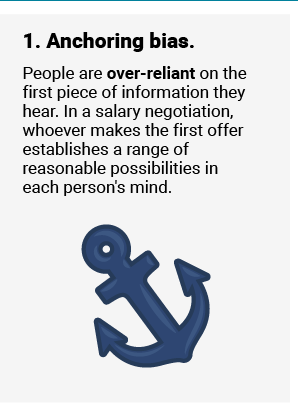
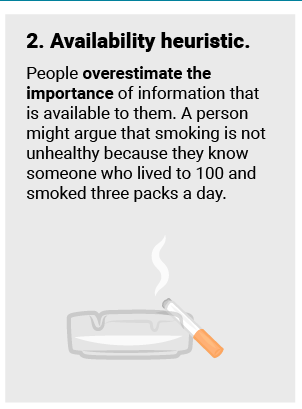
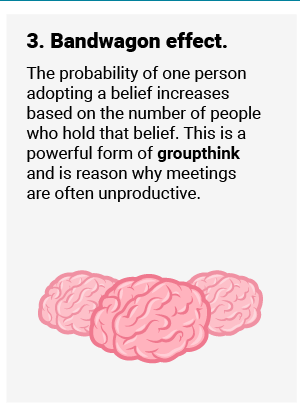
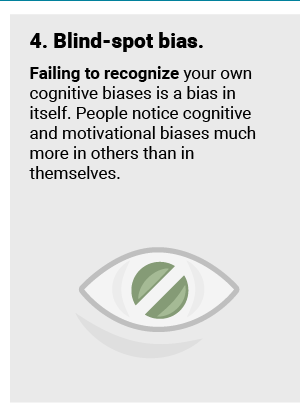
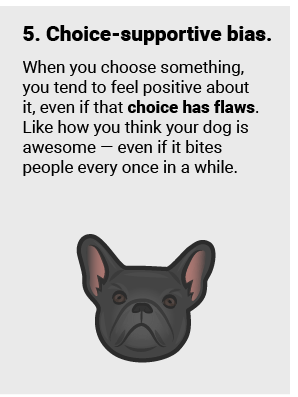
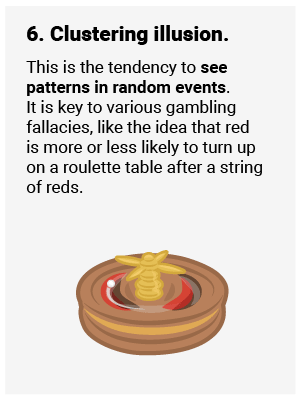
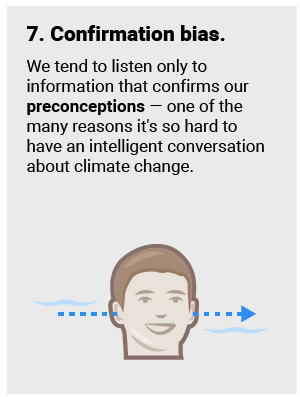
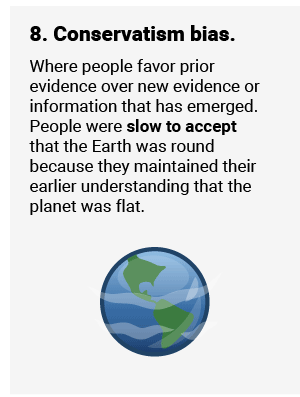
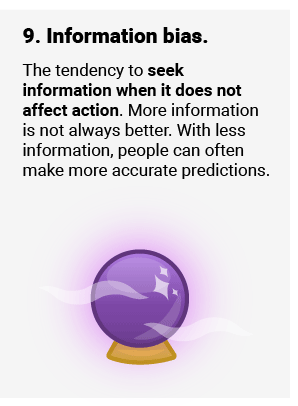
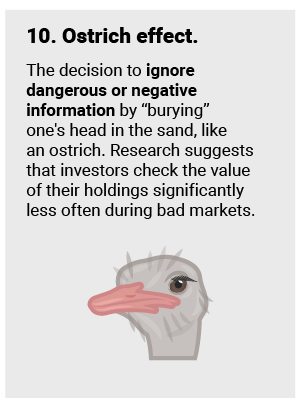
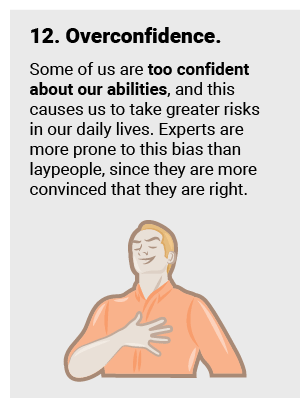
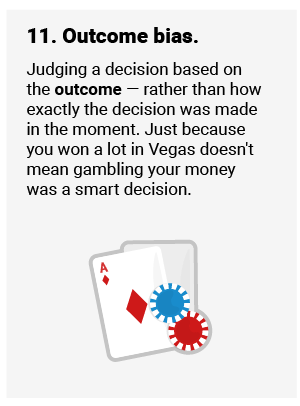
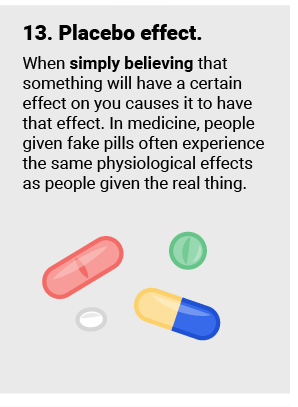
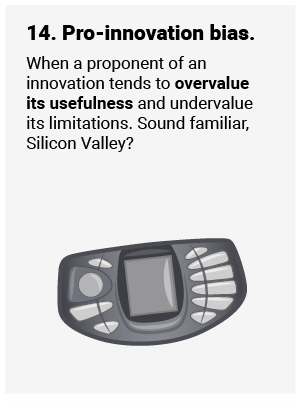

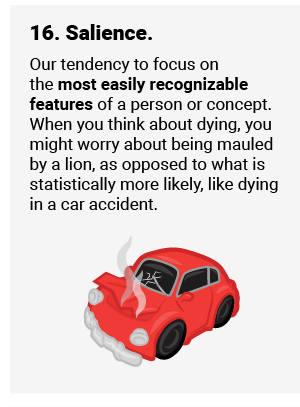
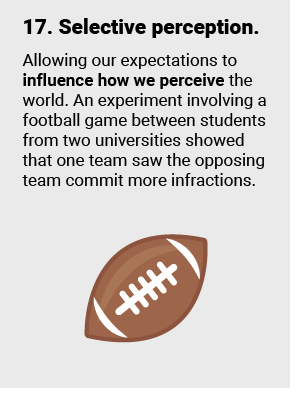
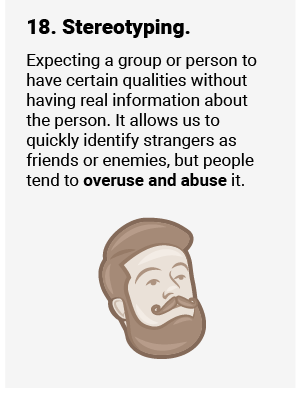
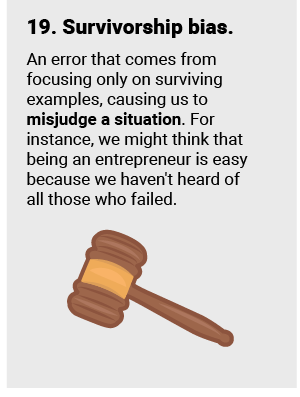
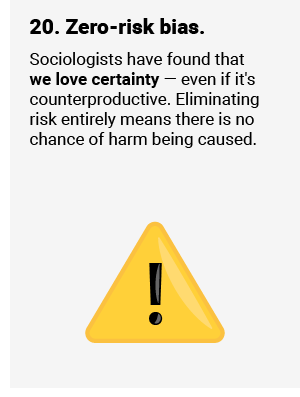
This is a half-baked theory. It doesn’t suggest any particular role for neurons or other physical aspects of the brain. It is about the workings of the mind. It is primarily concerned with the things we learn how to do.
Imagine yourself…your mind, as a volume of processing power: As an environment with a certain amount of ability to respond to the world. This software-like volume is a hierarchy made up of entities with different roles to play at different levels.
The smallest increment or unit is a “Mindon” (see: Making up crap, H. Miller). Metaphorically it is like a cell in the body, an atom in matter or a byte of computer memory. It is there not because of evidence pointing to it but simply because it belongs logically within the structure of this theory as the smallest unit of work. For our purposes, it creates the image of a tiny individual operator with a bit of processing power.
A new and unknown task is encountered. For example, learning a musical instrument, casting a fishing line or properly cutting an onion. The brain experiences it as if with a kind of touch in the processing centers naturally assigned to the sense data involved in the task (Motor, optical, etc).
Executive function does a kind of “importance triage” focusing on the sense data and relevant memories. Mindons begin to swarm and cluster around the task creating a complex imaginative prototype or map of the skill and begins measuring and comparing the experience of trying the skill against the map, making edits in the map as more information comes in and also making edits in DOING the task. Heuristics are noted and retained. With time and practice the map, measurements, and comparisons become more accurate, detailed and nuanced. Plateaus and benchmarks are hit and become a bit like a saved version of a game or a file, the starting point next time. Essentially this is a matured and organized group of mindons forming a stable repeatable task.
These coherent, informed collections of mindons I would call “Agents”. Something like playing the guitar wouldn’t involve a single agent but many. I imagine agents in this example being like proper holding, finger pressure, picking and strumming, volume and tuning, etc. Each of these areas would be an agent.
The whole coordinated group functioning together would be an Agency. I could use other names, I could call the agency a program and the agents, modules. The terminology isn’t very important but I’d like to not be completely bound by computer metaphors.
This system is far more fluid and flexible than any computer system. The agents are not limited to one specific agency, once established, I believe they can flow on demand into new situations that call for them. Somewhere in the mental map mentioned above would be a process of looking for existing “off the shelf” agents that could hit the ground running on the new task. For example, if you have an agency for driving a car or playing the guitar then when picking up a Ukulele, or sitting in a go-cart, the agency isn’t fully applicable but many useful agents flow instantly into position to handle the task.
So, mindons group at the behest of executive function, and form educated agents which group as a whole agency; “playing the guitar”. Singing would be an agency too so when playing the guitar AND singing there must exist a kind of Meta-agency that allows parallel processing and two-way feedback. All of this is playing out in a larger framework where the musician is also processing things like audience reaction, etc.
This suggests an overall environment or community of mindons, agents, agencies and…departments? I’m not crazy about the bureaucratic feel of this metaphor but the hierarchical structure is needed.
There’s some disagreement about how long modern humans have existed but the figure of 200,000 years is frequently cited. The lifestyle of the stone age was wandering groups of associated families usually between 25 to 50 people. Pretty much anyone you knew, you knew for a lifetime (yours or theirs). The stone age ended as the neolithic revolution in farming transformed the lifestyle of people into the sort of population dense settlements that have basically carried on to this day.
The Population Reference Bureau estimates that about 107 billion people have ever lived – since the beginning. Scientists suggest that out of that huge number, only about 12% of those people lived in the stone age. 12% doesn’t sound like a very significant number to influence the sort of people we are today. Until you realize that every person since then is a descendent of that 12%. And even more importantly that that 12% of all people was us during 96% of our time on Earth. Our roots are deep, deep in the stone age.
So our inner cave clan easily breaks through the surface of our modernism. 192,000 years of comforting small groups of closely related people with a distrust of strangers is not something you shake off like a daydream. When we utterly detest racists and xenophobes we are behaving toward ourselves as we might to our dog humping legs at a party or chewing shoes. We shout “NO!” and we drag them off, “stupid dog” we mutter. The dog’s behavior has been momentarily suppressed but not altered in the slightest. And certainly not for the next generation of dogs. Continue reading
“I could be bounded in a nutshell, and count myself a king of infinite space, were it not that I have bad dreams.” Hamlet, scene ii
An Odd Revelation
When I was a college boy many, many years ago I saw a cat.
I saw a cat and the cat was acting like a cat.
The cat was catlike and there was nothing about it that was anything BUT catlike.
This was a revelation and like most revelations it loses practically everything in the translation from shimmering vision to paragraph in black and white.
He was stalking and playing and being curious and easily startled and all sorts of catty things that anyone could predict. What filled me with awe was the fact that this cat had a nature and that he could do nothing that was not of a piece with that nature. The word nature comes from the Greek natura meaning “essential qualities, innate disposition” and that is the sense in which I mean this. I saw that cat as an expression of the essence of “catness” but not as some platonic ideal, I saw it as an instance of a running program. The program “Cat” existed in millions of instances all over the surface of the earth and I was watching a single instance of it having a nice moment in the Florida sunshine. Continue reading
- Mice were trained to be afraid of the smell of cherry blossoms (I don’t even want to know HOW).
- These mice later had litters which had never been exposed to cherry blossom and when they were, they were afraid of it.
- These second generation mice later had litters and their children…were afraid of the same smell.
This is obviously not direct alteration of the genetic code, it’s a methylation change called epigenetics. What it amounts to though is a much more powerful means of shaping evolution than sheer randomness, but one that doesn’t rely on some variety of intelligent design.
The next level of complexity is something you are a part of and something you can’t see.
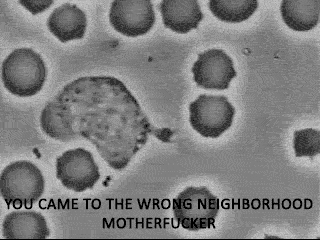 can learn new things (like a new antibody) and later REMEMBER those things. What language do they speak? Proteins and chemicals. They obviously don’t have independent lives in any sense that we find it easy to relate to, but at their microscopic level of reality, they are whole, autonomous units. They are part of “Team You”, and you couldn’t live without them but do they FEEL like YOU to you? I mean do you identify with them, like “Yeah, that’s me”?
can learn new things (like a new antibody) and later REMEMBER those things. What language do they speak? Proteins and chemicals. They obviously don’t have independent lives in any sense that we find it easy to relate to, but at their microscopic level of reality, they are whole, autonomous units. They are part of “Team You”, and you couldn’t live without them but do they FEEL like YOU to you? I mean do you identify with them, like “Yeah, that’s me”?- Visual and hearing processes
- Knowledge of physics
- Fine motor control
- Risk analysis
- Awareness of Traffic laws
- Reading
